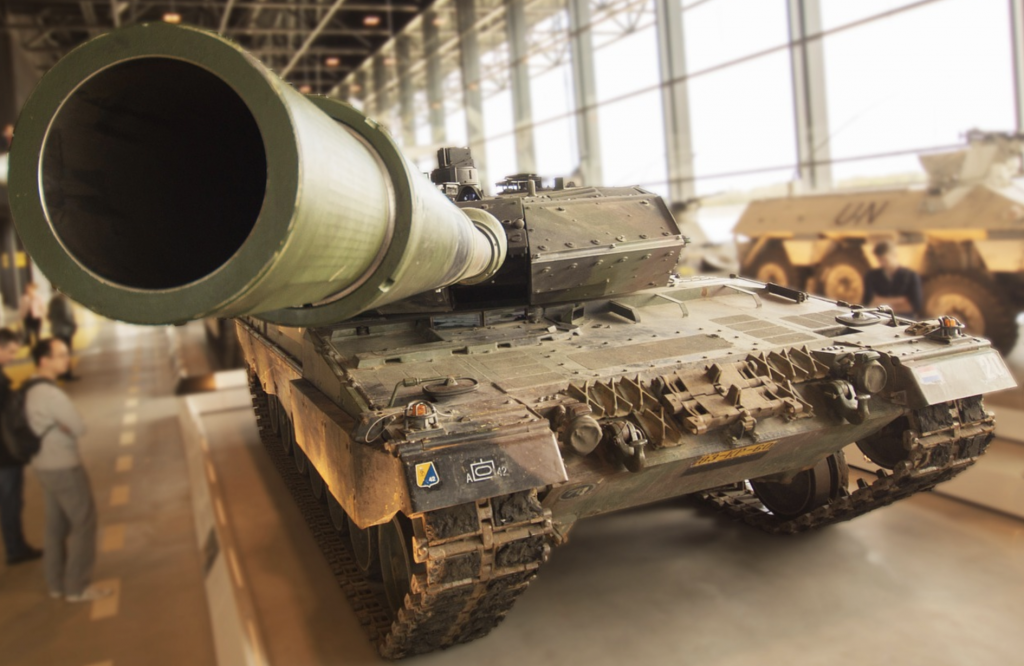
The general impression, that has endured since the Cold War, is that the Ballistic Missile Submarines (SSBN) enhance strategic stability through providing the adversary with an assured second-strike capability – thus, removing the incentive for counterforce preemptive strikes in an event of crisis. During the Cold War, both USA and USSR felt the need to develop the naval leg of their nuclear triad, in order to not just make the threat of massive retaliation credible, but to subside pressure on their land and air arsenals – it was believed that if one has an assured second-strike capability, there is no need to build upon land and air forces, as one would retain the capability to strike back in case of an attack either way.
In short, it was believed that SSBNs lead to strategic stability by providing an assured second-strike capability, crisis stability through obviating the desire to strike first, and arms race stability through removing the need to rely on numbers of the land and air forces.
These assumptions are rationally and empirically unfounded. In this article, the impact of Ballistic Missile Submarines (SSBN) and Submarine Launched Ballistic Missiles (SLBM) on strategic stability, crisis stability and arms race stability will be assessed separately.
Introduction of SSBNs and SLBMs to one’s arsenal enhances strategic stability through creating mutual vulnerability and, therefore, cementing the Mutually Assured Destruction (MAD). MAD is the term used for a state of affairs, where two adversaries have a secure capability to inflict countervalue strikes on each other, undermining the incentive for a preemptive strike aimed at adversary’s strategic forces. In this way, SSBNs do contribute to strategic stability, as Nuclear Submarines are hard to locate or detect and, thus, are much less vulnerable to an enemy’s counterforce strike.
But when we talk about impact of SSBNs on arms race stability, the picture is quite different and unsettling. First, deployment of the Nuclear Submarines was not able to halt the arms race between USA and USSR – they continued building upon their land and air arsenals. Contrary to the general assumptions, mutual vulnerability, which comes as an outcome of strategic stability, is not as welcomed by adversaries as it is thought to be – states find themselves uncomfortable in a state of vulnerability, even if it is mutual, and will try to alter the state of affairs through enhancing their anti-submarine warfare (ASW) capabilities. Thus, introduction of SSBNs in one’s strategic arsenal creates upward pressure on the conventional forces on the other side; states would utilize any options at their hand to trump their adversary’s advantage in the sea domain. This leads to a cross arms race where development of strategic forces on one side leads to advancement of conventional forces on the other, and vice vera.
The situation appears even more grim when the relation between SSBNs and crisis stability is assessed. Deploying SSBNs in one’s strategic arsenal has command and control implications; it is hard to maintain an assertive control (negative control ensuring weapons are never used unauthorized or by accident) over SLBMs – Permissive Actions Links (PALs) cannot be applied for their safety and the authority to launch them is inevitably delegated to the local commanders in the event of a crisis. Therefore, SSBN’s have a reputation of creating an always-never-dilemma for the security officials – a dilemma to choose between positive control (weapons always launched when intended) and negative control (weapons never launched without authorization) over the naval strategic reserves. The dilemma has continued to confound decision makers for decades, as submarines lose contact with the higher authorities when submerged, and have to have the capability to strike the enemy, in need, in order to keep the threat of retaliation credible.
Moreover, during a crisis, SSBNs coming in contact with the adversary’s ASW efforts are faced with use-or-lose pressures, which can lead to inadvertent escalation. For this reason, SSBNs carry great potential for undermining crisis stability; the activities in the sea domain might have a deleterious effect on land in terms of crisis management.
These issues are still pertinent to the international landscape as, while the Cold War is over, world is still tainted with nuclear armed adversaries, with a geographical and political context much more sensitive than that of the Cold War. India and Pakistan have been at loggerheads with each other, over the disputed territory of Kashmir, since their independence in 1947. The conflict has endured leading to four full-blown wars. Both declared themselves nuclear power states in 1998, leading to Kashmir being regarded as a nuclear flashpoint by the international community. India and Pakistan are now embroiled in an arms race and are enthusiastically pursuing the naval leg of their nuclear triad, with hopes, that it will create strategic stability.
Distance provided some shield to the nuclear adversaries during the Cold War, but in South Asia, due to the contiguity, the potential for crisis instability and inadvertent escalation is much greater. The arms race in South Asia has continued unabated, disproving the idea that an assured second-strike capability, achieved through SSBNs, takes pressure off the land and air forces. In fact, India’s introduction of Arihant – a nuclear powered SSBN – has pushed Pakistan to not only advance its ASW capabilities, but to develop its own naval leg in order to retain the capacity to retaliate in case of an Indian first strike.
The situation is even worse when assessed in terms of crisis stability. Both, Indian and Pakistani SSBNs will be dangerously close to each other, due to the fact of being neighbors. Moreover, they have not specified how will they be resolving the always-never dilemma in the context of command and control of their SSBNs. The only option that appears possible, as of now, is the delegation of authority to the local captains, which can be perilous in the time of crisis.
SSBNs and SLBMs contribute to strategic stability through making the capability to retaliate on both sides credible, but, contrary to what is expected, they have not proven to have contributed much to crisis or arms race stability. Regardless of maturing of the sea-based deterrents, arms race continued during the Cold War, and so it has in South Asia. Problematically, the naval strategic reserve carries a huge potential for crisis instability and inadvertent escalation due to command and control issues and communication breakdowns. It is important for Pakistan and India to be mindful of the implications attached to a sea-based deterrent, and do not place high hopes in it as a stabilizing force for South Asia.
![]()




Be the first to comment